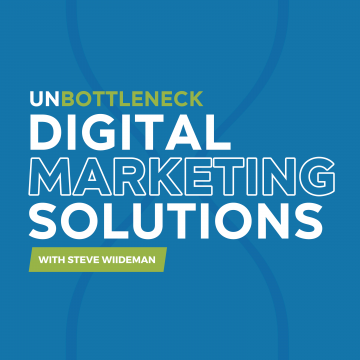Podcast: Play in new window | Download
In this episode of the Unbottleneck Podcast, Steve Wiideman is joined by tech SEO expert, Adam Humphreys, to dive into all things technical including web security, ADA compliance, core vitals, and the best practices for improving technical search engine optimization.
About Our Guest: Adam Humphreys
Adam Humphreys has been specializing in digital marketing since 2001, helping businesses streamline their operations, brand, and reputation to actively connect with people seeking their product service offerings. Adam is Owner and CEO of Making 8 Inc. providing integrated digital marketing services and Founder of Oil Authority Inc. an international oil & gas network of over 8900 businesses. People regularly call upon Adam for forensic SEO.
Sponsored by Ryte
Featured in this episode:
- Getting the Tech Side Right
- ADA Compliance
- Hacking Vulnerabilities and Security Threats
- Best Practices & Ongoing Efforts for your Site
Getting the Technical Side Right
In SEO, there needs to be harmony between technical, content and off-page components in order for a website to perform well in the search engine rankings.
Technical skills are crucial to support a website’s security, privacy, accessibility, speed and mobile-friendliness. These are the areas that can impact user experience, thus influencing your rankings in Google.
Security, for example, is the most basic yet important ranking signal that will establish your website’s trustworthiness. When you go to the search results, Google is not going to recommend a site that may harm your computer.
The same thing applies to page speed. Many web designers have a habit of filling a site with elaborate functions and imagery that could be slowing the website down, especially on mobile devices. If it takes too long for your page to load, users will return to the search results and click on a competitor, thus signaling to Google that you may not be a helpful search result.
Ensure that your website has all the technical bells and whistles to support user experience and rank in Google and other search engines.
Pro-Tip: At the core, you must have solid content and great links. If your content is not engaging or shareable, no amount of technical support will be able to help your website perform well.
ADA Compliance
All websites are required to be designed in a way that everyone can use which includes the hearing and visually impaired. Americans with Disabilities Act (ADA) compliance allows those with disabilities to use your website in a way that works for them.
If your website is not ADA compliant, it’s a lawsuit waiting to happen, especially if you’re a larger brand. The truth is, there are people that purposefully surf through the Internet trying to find sites that are not accessible just so they can sue.
Here are some ways you can make your website ADA compliant:
- Label your pictures
- Use common fonts (ex. Arial, Times New Roman)
- Use large font sizes
- Overlay text on images
- Use captions
Hacking Vulnerabilities and Security Threats
According to Google, 50% of WordPress sites are not updated. If you fail to perform regular maintenance and update your plug-ins, your site (aka your business) will become vulnerable to hackers trying to steal your data and manipulate your search results.
Plug-ins are updated frequently – sometimes as often as four to five times within a two-week period because so many people are using it. So you have to make security a priority and go into your admin control panel and update your plug-ins as needed (or pay someone to do it for you).
The Ongoing Effort of Improving Your Site
It’s not enough to just create a website, you have to maintain it and constantly be improving it to ensure that your customers are served. In order to do this, you must understand their intent when visiting your site.
If your content is anything less than amazing and doesn’t solve for the user’s intent, they’re going to leave. Therefore, don’t fill your website with jargon that is all you. Instead, focus on creating the most helpful content — which includes having the technical functionality to support it.
Pro-Tip: Using key performance indicators (KPIs) are a great tool to perform regular updates to your website. These metrics can be used to understand user behavior, referral traffic, time spent on page, etc.
Before you get started, here are some questions that will help guide your ongoing technical SEO strategy:
- Are you watching what the competitors are doing?
- What are you doing differently?
- What are you doing to solve for the customer?
- What are their objections?
- Are you overcoming their objections in your content?
- Are you linking internally to another page that might be able to answer their question?
- Are you doing more than saying “buy it now”?
Keep up with the best local SEO and digital marketing strategies. Follow Steve on LinkedIn!




